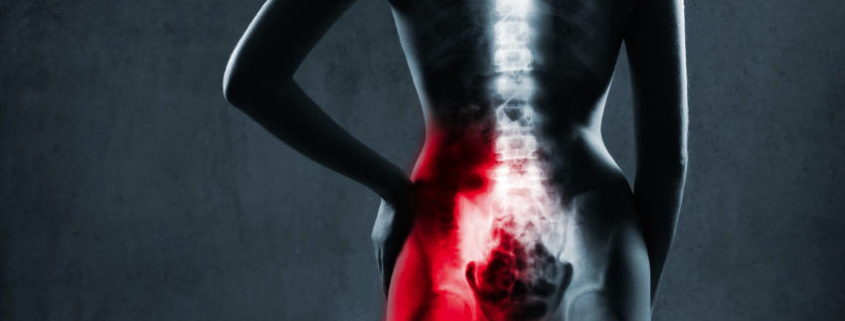Osteopathy Treats Sacroiliac Joint Pain
Osteopathy Treats Sacroiliac Joint Pain – The Sacroiliac joints (bony surfaces supported by strong ligaments) connect the sacrum (the triangular shaped bone at the bottom of the spine) to the iliac bones (the two bones that make up the pelvis). The sacroiliac joint allows for a small amount of movement that is important for maintaining stability of the spine and pelvis during walking and running as well as for expansion of the pelvis during childbirth.
Trauma or torsional stress to the pelvis can cause injury, misalignment, and pain arising from the joint itself or the supporting ligaments. Sacroiliac joint dysfunction is normally one sided but may effect both sides and symptoms may include lower back pain, buttock pain, sciatic leg pain, groin pain and hip pain. Pain can range from dull aching to sharp and stabbing and increases with physical activity. There is always muscle spasm/tension in one or both buttocks and / or hip muscles.
Occasionally it radiates down the leg and as far as into the foot and may mimic a bulged disc in the lumbar spine.Symptoms worsen with prolonged sitting, standing or lying down, turning over in bed, bending forward, putting on socks or shoes, stair climbing, hill climbing, running, taking large strides, moving your legs in and out of a car seat and rising from a seated position.
SIJ dysfunction can be caused by trauma such as, falling heavily on one buttock or one foot that shears the Sacroiliac joint. Or any condition that alters the normal walking pattern, such as a degenerative knee, hip or a leg length discrepancy places increased stress on the Sacroiliac Joints. SIJ dysfunction is common in pregnant women is due to hormonal changes during pregnancy lengthen pelvic ligaments and increase the probability of strain.
Your Osteopath will take a careful case history and do a full assessment and diagnostic tests to discover the cause of the problem. Treatment of any aspect of the pelvis involves aligning and unlocking all the structures that make up the pelvis with each other to create balance and stability between the pelvis and spine. Osteopaths have a number of techniques to achieve this (which may include joint manipulation and mobilization) and sports massage depending on the age of the patient / chronicity of the problem the osteopath will also give you exercises if necessary and postural advice.
View a list of common complains that Osteopathy can assist with
Discovery the benefits of Osteopathy
- What is Osteopathy?
- Adult health issues
- Babies and Children
- During and after pregnancy
- Common Complaints
- Testimonials
- Sports Injuries
- Genral Osteopathy FAQs
- The Science & Reasearch



